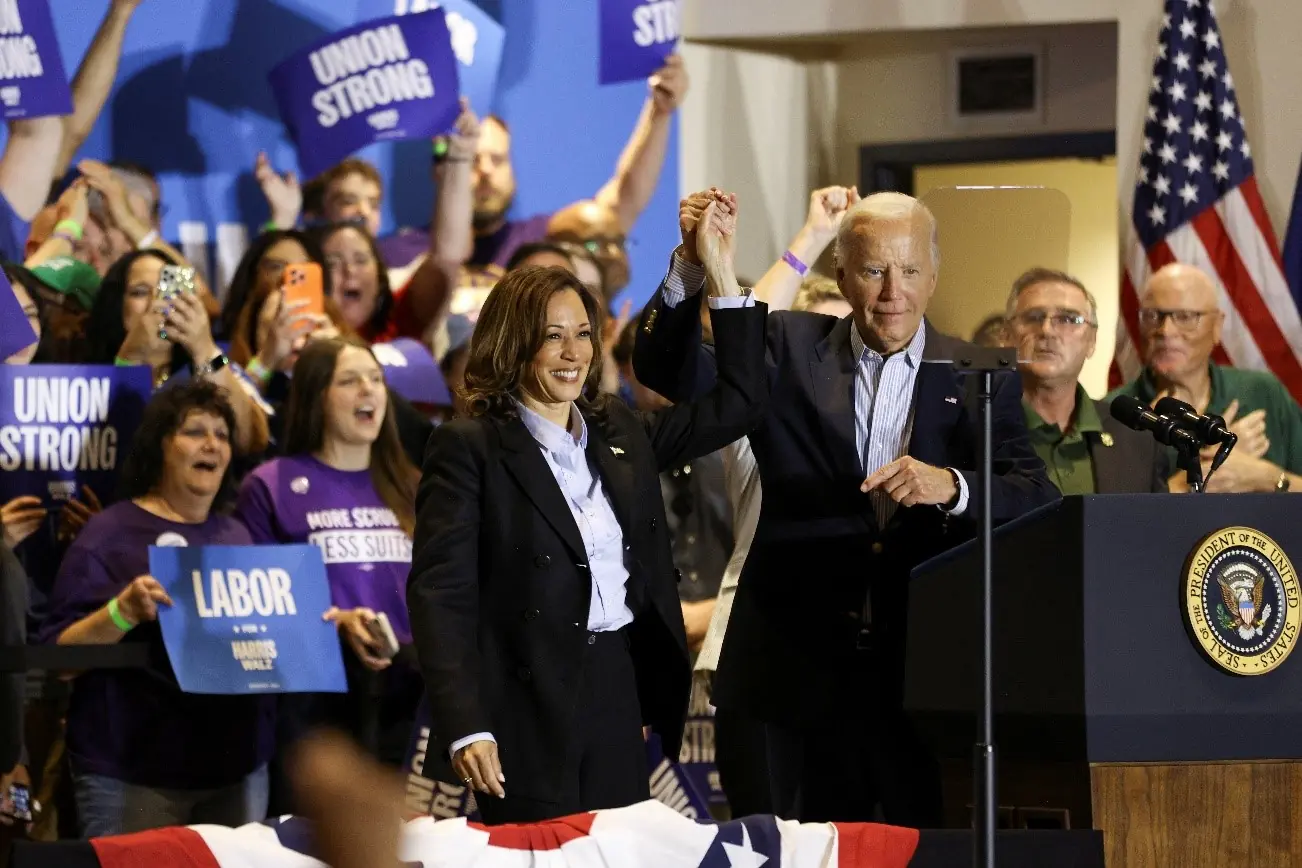
President Joe Biden Joins Vice President Kamala Harris at Pittsburgh Rally, Emphasizes Union Support and U.S. Steel Ownership in First Joint Campaign Appearance Since Dropping Out
Fiona Nanna, ForeMedia News
6 minutes read. Updated 10:01AM GMT Mon, 2September, 2024
In a powerful display of unity, U.S. President Joe Biden joined Vice President and Democratic nominee Kamala Harris at a rally in Pittsburgh, Pennsylvania, marking their first joint campaign appearance since Biden exited the presidential race in July. The event, held on Labor Day, was strategically aimed at bolstering support among unions and blue-collar workers in this pivotal battleground state ahead of the November 5 election.
Pennsylvania, a key state for both parties, will see Harris facing off against former President and Republican candidate Donald Trump. Biden, who stepped back from his presidential run following a debate that intensified concerns over his age, vowed to support Harris fully in the campaign’s critical final phase. “I’m on the sidelines, but I’m going to do everything I can to help,” Biden declared, sharply criticizing Trump’s stance on labor issues. “He’d rather cross a picket line than walk one. I have no problem walking the picket line, and neither does Kamala.”
Biden’s remarks underscore his historic involvement in labor movements, as he became the first U.S. president to join striking workers on a picket line last year. Harris echoed Biden’s sentiments, leading the crowd in a chant of “Thank you, Joe,” and pledged to uphold what she termed the most “pro-union administration in U.S. history.”
Highlighting her commitment to domestic industry, Harris emphasized her stance on maintaining U.S. control over critical sectors like steel production. This follows Biden’s earlier comments about U.S. Steel Corp’s impending acquisition by Japan’s Nippon Steel for $14.9 billion, stressing that the company must remain American-owned and operated. “We will continue to strengthen America’s manufacturing sector,” Harris affirmed. “US Steel is a historic American company, and it is vital for our nation to maintain strong American steel companies.”
While this event marks Harris and Biden’s first joint campaign rally, they have appeared together at significant occasions, including the Democratic National Convention and a White House event on Medicare drug price cuts. Harris also made a separate appearance in Detroit, Michigan, where she encountered protesters demanding a shift in U.S. support for Israel amid ongoing conflicts.
Political analyst Phil Lavelle reported that Harris’s strategy includes distinguishing herself from Biden while leveraging their shared accomplishments. “She needs to be seen as a change candidate, despite her association with the current administration,” Lavelle noted. This balancing act is crucial, as Republicans continue to critique the Biden administration’s economic policies, a focal point in Harris’s campaign messaging.
Jeremy Zogby, an independent pollster, underscored the volatile nature of the race, noting that while Harris currently leads Trump in several key battleground states, the dynamics could shift significantly before election day. “Battleground states are always fluid,” Zogby explained. “As we move past the initial excitement around Kamala, the focus will shift back to the pressing issues. It’s going to be a dynamic race to the finish.”
With the first debate between Harris and Trump slated for September 10, all eyes are on the candidates as they navigate the challenges of the campaign trail.

